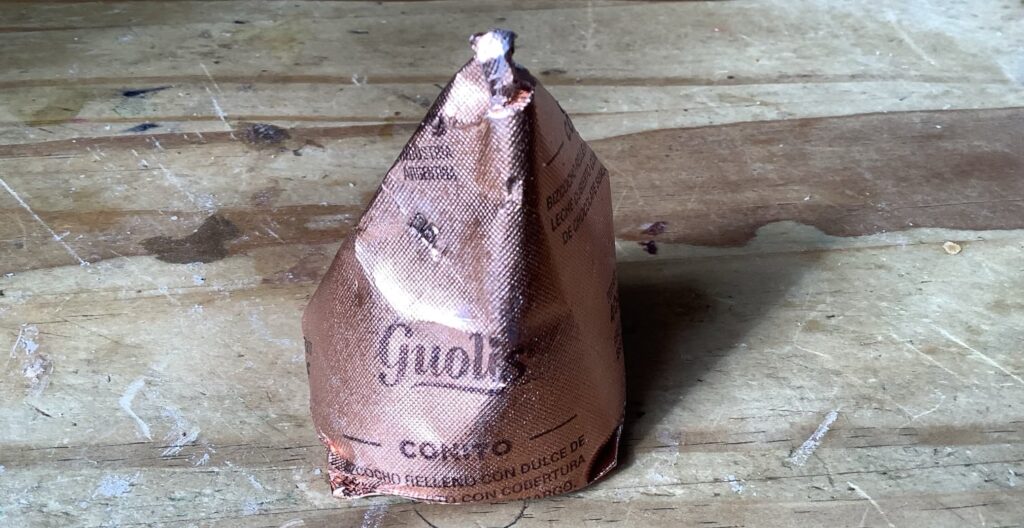All diary
Argentinian diary products are all excellent. They taste quite different from American products, most likely because the cows have a different feed. Some day – I can only hope – they’ll start importing these products to the US and they’ll take it by storm.
I’m not a milk drinker, so I can’t comment on the milk – but butter and cream just taste better.
Mayo
Yep, even mayo tastes better. It might be the eggs (not an egg eater, didn’t try them) but most likely it’s the oil they use: sunflower seed oil. I’m going to have to check at stores that carry Argentine products if they sell Argentine mayo as well.
French Fries
I don’t exactly know why, but Argentine french fries are all yummy. They are usually on the thin side – a little bit fatter than your average McDonald fry – and non-coated. But I think the secret is, once again, the oil on which they are fried. On some cases it may be sunflower seed oil or grapeseed oil, but in others it’s just a comercial mixture.
Strawberries
They were in season when we first got there, and OH MY GOD – the little, totally ripe strawberries where unbelievable. It reminded me of why, as a kid, strawberries and cream was my favorite dessert to order at restaurants.
Beef
Need I say more?
Rotisserie Chicken
As a kid I LOVED pollo al spiedo or rotisserie chicken. There was a deli kitty corner to our house and its amazing aroma teased me every time I’d go by. But it was a special treat which we could only have once in a while. No wonder, even now a rotisserie chicken costs U$6, pretty much the same as in the US and substantially more than beef. Rotisserie chickens are no longer widely available in Argentina, they’ve been supplanted by grilled chicken, but we had it a couple of times in Salta. And OH MY GOD, it was soooooooooooo good. Surely the marinades must be a reason, if I could only find those recipes.
Medialunas
Argentina’s croissants can be great – but they not always are. At the hands of the right bakery they can be heavenly, though.
Masas Finas
These bite-size pastries often featuring dulce de leche are also a wonderful treat. They are expensive – often costing U$7-11 a kilo (depending of the bakery).
Milhoja
This typical Argentine treat consists of multiple layers of very thin phillo-like dough covered with dulce de leche. Again, it’s a matter of which bakery makes it, but at the hands of the right bakery it can be delicious. I had to bring a kilo of milhoja to my sister back from Argentina.
Imperial
This is another typical Argentine tea-time treat. It’s a rectangular cake of hard merengue and cream. Yummy.
Alfajores
They deserve a whole entry of their own. Stay tuned.
Bocaditos bonafide and cabsha
Yummy dulce de leche is covered by a thin layer of chocolate. I’m eating one as I write this. It’s heaven.
Dulce de leche
Of course
Ice Cream
Argentine ice cream rocks. It’s lighter than American ice cream and with more intense flavors. Apparently this is because it has less air and less cream but I don’t really know. And of course, it’s made with Argentine milk which makes all the difference. It’s relatively expensive for Argentinians – one reason why ice cream was such a treat when I was a kid – with a kilo costing between $5-7 depending where you buy it.
Flavors are also significantly different from those available here. There is strawberry (choice of water or creme based), chocolate and vanilla, of course, but much better are dulce de leche granizado (dulce de leche with shaved dark chocolate), crema americana, sambayón, tramontana, mantecol and others. We ate ice cream at least once every day and I already miss it!
Paso de los Toros Pomelo Light
This is a diet grapefruit soda manufactured by Pepsico which is actually delicious. The regular version is quite good, but the light version, which is less sweet, is even better. If you like grapefruit soda, you’d go crazy over it. Alas, it’s not available in the US. Which is difficult to understand as it’s just sooooooooooooooooo good. Please, someone at Pepsi, bring it to the US!
Now, as for things that are not good in Argentina:
Cookies
They suck, they are dry and lack flavor.
Cereal
Just try to find cereal without sugar. I dare you. Try (OK, maybe a health food store, but not at the supermarket).
Variety
In Buenos Aires you can find a number of ethnic restaurants, but forget about having non-Argentinian food (other than Chinese or Spanish) almost anywhere else.
Chocolate
Vastly inferior to American or European chocolate.

Recent Comments